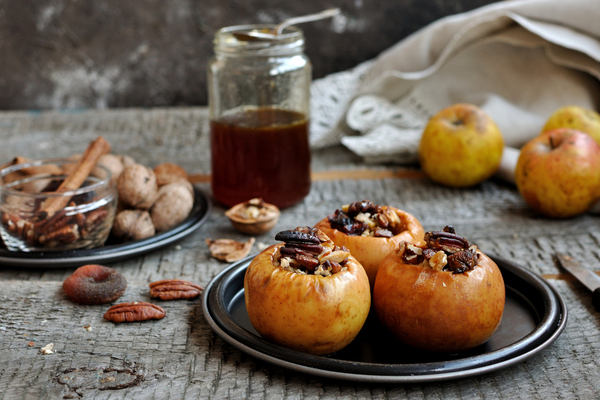What makes a food “healthy?” Dessert by its very nature – a sweet treat typically reserved for after a main meal – is usually not considered a “healthy” food. Most desserts are chock full of sugar and fat, and eating too much of these things isn’t good for your waistline or your health.
Shelley Wood, a registered dietitian at the Santa Clara Valley Medical Center, says that foods can be considered “healthy” when they are “nutritionally dense. This means that the food has more nutrients in it per weight than less healthy foods. Nutritionally dense foods are usually as natural and fresh as possible, maintaining all of their vitamins, minerals and fiber.” But there are some ways to make enjoying the sweeter side of life a little healthier, she notes. “Healthier options for desserts are those that are not loaded with added sugar and saturated fat.”
Although we’re rightfully encouraged to limit our intake of sweet treats and desserts, they can be part of a healthy and well-balanced diet. Eating is about more than just consuming calories and nutrients – there’s an emotional side to it, too, and dessert often fills those emotional needs. “Life can be about joyful experiences, so having something delicious and healthy at the end of your meal, like a dessert, is a great reminder of just that joy,” says Reema Kanda, a registered dietitian nutritionist at the Hoag Orthopedic Institute in Irvine, California.
The concept of “seasonality differs depending on where you live in the United States,” Wood says, as not all regions support growing the same produce. Across the U.S., however, “pumpkins, apples and cranberries are everywhere and are synonymous with fall.” If you’re eating seasonally, these foods can all be a great starting point for a healthy fall dessert and should feature prominently in anything to make this time of year.
One of the most delicious and healthy fall desserts that also happens to be very easy to make is baked fruit, says Mary Mosquera Cochran, a registered dietitian at The Ohio State University Wexner Medical Center in Columbus. “Baked apples or pears topped with frozen vanilla yogurt or even a small scoop of ice cream” is a simple and delicious way to enjoy the sweet bounty of autumn. “If you want a quick route to this dessert, you can microwave the fruit,” which shortens cooking time, she says.
“Replacing grain-based desserts with fruit-forward desserts allows you to avoid added sugars while enjoying sweet treats,” Kanda says. The process of baking or grilling fruit naturally increases their sweetness. “Fresh fruit at the height of its season is so naturally sweet and satisfying, especially by incorporating it into recipes that instruct you to roast, bake, poach or grill the whole fruit.”
“Another really simple dessert is adding a tablespoon of pureed pumpkin to Greek yogurt. You can also stir in a little maple syrup, ginger and cinnamon” to make a flavorful and filling dessert reminiscent of pumpkin pie, Mosquera-Cochran says. “You can even crumble some graham crackers into it,” to approximate the flavors and textures of pumpkin pie. Mosquera-Cochran says that in the end, if you’re going to have any kind of dessert – whether an indulgent, high-calorie one or a healthier version – “just drop the guilt about it.” Feeling guilty about what you’re eating can set you up for longer-lasting and worse cravings. “That creates a bad relationship with food.”
Similarly, Mosquera-Cochran advocates for “mindful eating. Be fully there with the experience. Don’t eat while watching TV or while scrolling through social media feeds.” Engage all your senses. “Smell the food, feel the texture of it and savor it so you can get the full enjoyment of what you’re eating,” she adds. And “along those lines, serve yourself a smaller portion than you think you’ll need to be satisfied.” You can always have a second portion, but if you pause and give your body time to recognize that you’re full, you may find you don’t crave any more than you’ve already had.
Kanda agrees that moderation is key. “Let your body guide you. Try to eat dessert after your meal to avoid overindulging. It’s hard to stick to a small portion if you’re super hungry. There are no real rules to what makes a dessert healthy. In the end it’s about balance, portion size and what you personally fancy.”
—
Photo Credit: Julie Style / Shutterstock.com
